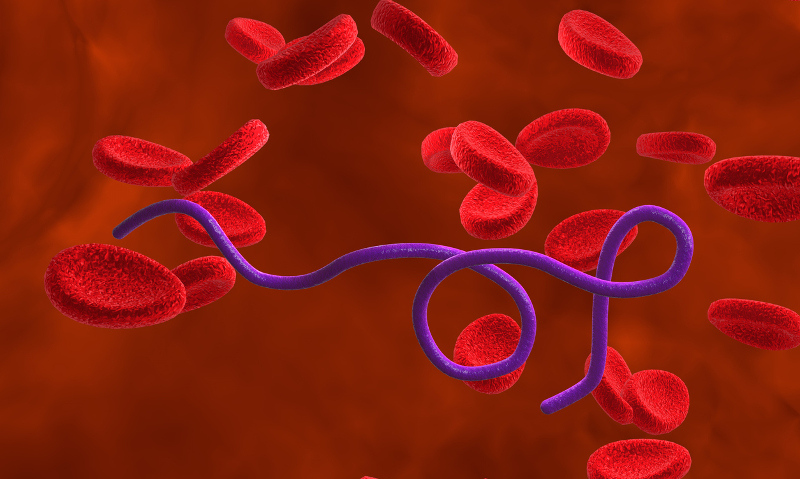
Topic: Increasing your awareness of Lyme Disease and prevention strategies
Dear Students and Denison community,
With warming weather fast approaching, I am reminded that May is Lyme Disease Awareness Month.
Supported by the Lyme Disease Foundation, this awareness month has been propelled forward by a steady increase in the number of reported cases of Lyme disease in the United States.
Ohio local and state health officials have released statements that Lyme Disease is on the rise in Ohio. The increase in confirmed cases of Lyme Disease is felt to be due to an increase in the black-legged tick (deer tick) population in Ohio. Licking County has been identified as a county which is “Lyme Disease endemic,” meaning that two or more cases of Lyme Disease have been confirmed.
In a statement, made April 2015, Joe Ebel, Licking County Health Department commissioner, indicated “it used to be if we saw a Lyme disease case diagnosed, it was someone who had traveled to the East Coast, got the infection, and returned to Ohio where it was diagnosed. That is no longer the case.” Per data released by the LCHD, there were 11 confirmed and 1 suspected cases in Licking County last year, compared with 4 cases the year before.
Of course, this is minimal compared to the experience in the two “high incidence” areas of the country where Lyme disease has been a frequent and ongoing problem for quite some time. These are mainly the East Coast, centered in the Southern New England and Mid-Atlantic states, and upper Midwest area, centered approximately in Wisconsin. As Ohio is about equidistant from these two areas, it has taken quite a while for the black-legged ticks to arrive in significant numbers but, predictably, the problem will only increase.
You are more likely to get Lyme Disease if you live or spend time in grassy and heavily wooded area where ticks carrying the disease thrive. It is, therefore, important to take common sense precautions in areas where ticks could be prevalent.
Signs and Symptoms
Lyme Disease signs and symptoms are variable (can be different for different people) and usually appear in stages. Lyme Disease is a multisystem disorder caused by a spirochete through a tick bite.
First or Early signs and symptoms of Lyme Disease (1-4 weeks after being infected by a tick)
- An expanding, circular red rash, with Bull’s-eye appearance (unfortunately not everyone develops this rash). Erythema migrans is the diagnostic term for this rash.
- Flu like symptoms of fatigue, tiredness, joint and muscle pain, headache or stiff neck
Later signs and symptoms of Lyme Disease (Weeks to months following the initial infection)
- Erythema migrans appearing in other areas of the body
- Joint pain and swelling, especially likely to affect the knees
- Neurological problems
Prevention
The best way to prevent Lyme disease (as well as Rocky Mountain spotted fever and other tick-borne infections) is to reduce your chance of exposure to ticks by avoiding areas where deer ticks live, especially wooded, bushy areas with long grass.
CDC’s guidelines listed below will further reduce your chances of getting Lyme Disease
Avoid Direct Contact with Ticks
- Avoid wooded and brushy areas with high grass and leaf litter.
- Walk in the center of trails.
Repel Ticks with DEET or Permethrin
- Use repellents that contain 20 to 30% DEET on exposed skin and clothing for protection that lasts up to several hours. Always follow product instructions. Parents should apply this product to their children, avoiding hands, eyes, and mouth.
- Use products that contain permethrin on clothing. Treat clothing and gear, such as boots, pants, socks and tents with products containing 0.5% permethrin. It remains protective through several washings. Pre-treated clothing is available and may provide longer-lasting protection.
- Other repellents registered by the Environmental Protection Agency (EPA) may be found at Insect Repellents: Use and Effectiveness .
Find and Remove Ticks from Your Body
- Bathe or shower as soon as possible after coming indoors (preferably within 2 hours) to wash off and more easily find ticks that are crawling on you.
- Conduct a full-body tick check using a hand-held or full-length mirror to view all parts of your body upon return from tick-infested areas. Parents should check their children for ticks under the arms, in and around the ears, inside the belly button, behind the knees, between the legs, around the waist, and especially in their hair.
- Examine gear and pets. Ticks can ride into the home on clothing and pets, then attach to a person later, so carefully examine pets, coats, and day packs.
- Tumble clothes in a dryer on high heat for an hour to kill remaining ticks. (Some research suggests that shorter drying times may also be effective, particularly if the clothing is not wet.)
